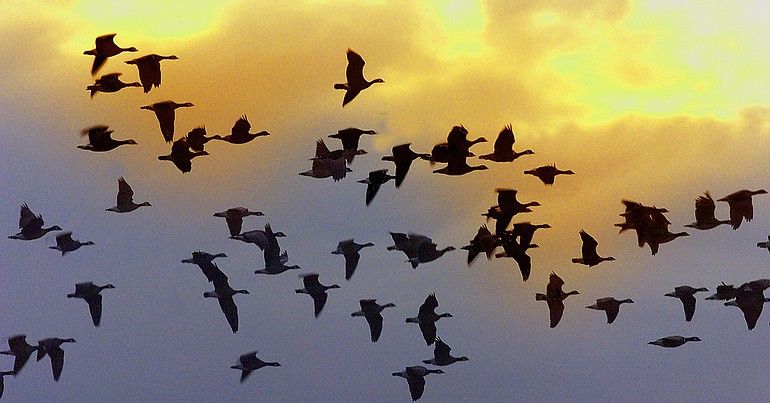RIDGEFIELD — The Ridgefield National Wildlife Refuge’s draft 15-year management plan is getting a frigid reaction from local hunting groups.
The U.S. Fish and Wildlife Service released the draft plan for the 5,150-acre refuge in June and is taking public comment on its four alternatives through Friday. The preferred alternative proposes to continue the hunting program status quo, but not open the south end of Bachelor Island.
Waterfowl hunters have lost blinds and opportunity despite a growth period when the refuge added acreage, according to the Lower Columbia chapter of the Washington Waterfowl Association.
“Our input has been ignored and our time wasted based on the way the four alternatives have been worded pertaining to waterfowl hunting,’’ said Doug Hargin, secretary-treasurer of the Lower Columbia chapter.
Alternative 4 of the draft refuge plan calls for closing 207 acres at the south end of the River S unit to hunting to protect dusky Canada geese and sandhill cranes, but would open 250 acres on Bachelor Island.
The alternative would close the south end of the auto-tour route from Oct. 1 to March 15, reducing its length from 4.3 miles to 2.6 miles.
Hargin said the Waterfowl Association could accept alternative 4 if the south end of the River S unit stays open at least for duck hunting.
The south end of River S is the most productive hunting area on the refuge, he added.
Don Fish Jr. of the Vancouver Wildlife League echoed Hargin’s disagreement with the plan.
“We are bewildered, frustrated, betrayed, and angry,’’ Fish said. “We’ve submitted proposals three times and they use flimsy excuses why they can’t do what we ask.’’
The Wildlife League wants 27 hunting blinds in their original locations on the River S unit, the auto tour route closed during hunting season, hunter parking returned to a wooded central area, fiberglass blinds to replace concrete tube blinds, and more corn planted.
Between the auto tour route, and sportsmen driving on the dike to access blinds, the hunting experience is spoiled, Fish said.
Cars on the auto tour route come too close to the handicapped hunter blind, he said. Concrete tube blinds have dead frogs, snakes and putrid water in them, he added.
Fish said the league members helped the Fish and Wildlife Service politically in acquisition of the Ridgeport Dairy and Bachelor Island properties. If 25 percent of the refuge is reserved for hunting, then 547 additional acres of hunting area should be added, he said.
The blinds on the south end of the River S unit are the best place to get geese to decoy, allowing hunters to identify the subspecies and avoid shooting the long-suffering dusky subspecies, he said.
Bachelor Island also should be open for hunting, said Fish.
“Shells, guns, dogs, they all cost a lot of money,’’ he said. “They’re going to get us out of there a stab at a time and try to change the refuge to an auto tourist place.’’
Arden Hagen of the Vancouver Audubon Society said the railroad crossing to the River S unit is dangerous and needs to be replaced.
Hagen also said he is not opposed to hunting on Bachelor Island.
Hunters will lose a blind if the road to River S unit is relocated, and that loss should be mitigated, he said.
Marguerite Hills of the Friends of Ridgefield National Wildlife Refuge said her group is “a support organization for the refuge and wouldn’t have anything but supportive statements.’’




